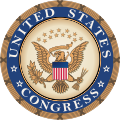
In last May’s newsletter we told you about proposed changes to the patent statute to, hopefully, correct some of the damage that the Supreme Court has done to the U.S. patent system over the last decade. Among other things, the Supreme Court has expanded the judge-made categories of inventions that cannot be patented to include most software inventions, many biotech inventions, and most business and financial inventions. These judicial ‘exceptions’ to patentability have caused substantial confusion and uncertainty, particularly in the tech and life sciences industries.
Senators and congressmen from both parties floated a proposed amendment to the patent statute to try to resolve the problem. The proposal would expressly ‘abrogate’ (overrule) the Supreme Court’s judge-made exceptions. If the proposal becomes law, the judge-made exceptions would vanish and new statutory limitations would be added.
The Senate Judiciary Committee held three days of hearings on the topic in June, hearing testimony from pharmaceutical and tech executives. A diverse group of interested parties also signed a letter supporting the draft legislation. Republican Senator Tillis and Democratic Senator Coons, who floated the proposal, issued a joint report stating that although interested parties disagree, legislative action is necessary.
An exception to this love-fest was Paul Morinville, the only independent inventor to testify before the Senate Judiciary Committee. Mr. Morinville wrote an essay opposing the draft, because of its effect on computer-implemented inventions. Mr. Morinville points out that the current proposal would severely limit any patent claim that is ‘functional,’ that is, the claim addresses what the invention does rather than specifically how the invention does what it does. The problem for computer-implemented inventions is that there are many ways for software to accomplish any particular function and claiming the function may be the only way to protect a computer-implemented invention. In addition, the draft would introduce a ‘technology’ requirement, which is close to the ‘technical’ requirement in Europe that restricts computer-implemented patents.
It is unclear who prepared the draft or why the technology and functional limitations are in the document. This author’s inner conspiracy theorist believes that the purpose is to allow pharmaceutical and life-sciences patents but to block meaningful software and computer-implemented patents. The draft legislation is still at an early stage and undoubtedly will change as the process moves along.
The bottom line – influential senators and congressmen believe that something must be done about patent eligibility and are willing to work on the problem together. We expect another draft later in the summer.
— Robert Yarbrough, Esq.

